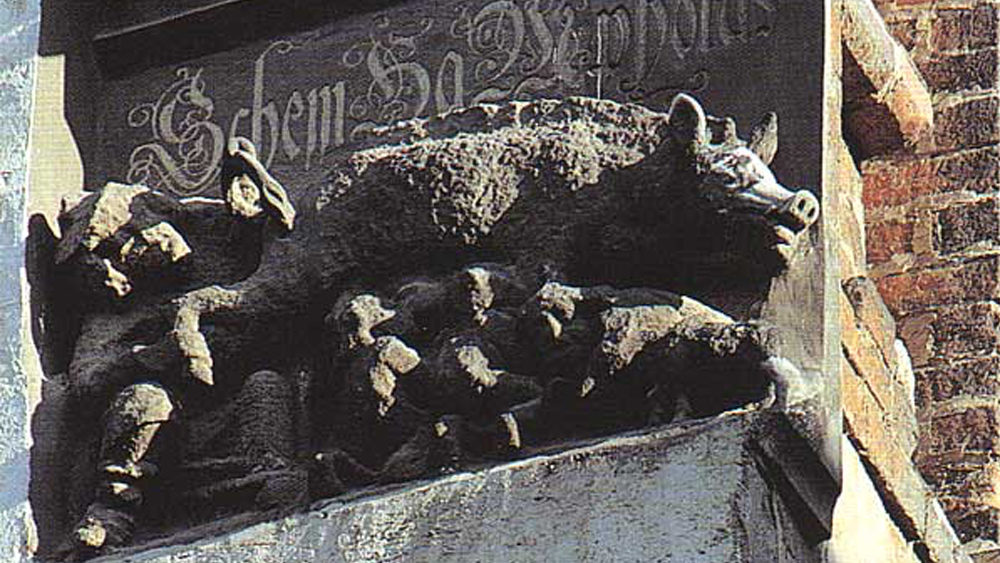The Parish Church in Wittenberg, a small town in the old East Germany, is famous for two things. One is that it was the church Martin Luther preached in, and the first church in Germany where communion with both bread and wine took place. (It is not the church where Luther nailed his 95 theses – that’s the Castle Church a short stroll away, across the town square and up the main street.)
The second thing this church is famous for is the statue of a pig suckling Jewish children with a Rabbi lifting its tail and peering at its behind. The “Judensau,” or “Jew pig” is a reminder of anti-Semitism in the Middle Ages, but is also shocking to find it on the facade of “the mother church of the Reformation”.
According to Reuters, the Higher Regional Court in Naumburg recently heard a case seeking the removal the pig sculpture, but ruled that displaying the “Judensau” did not constitute an offence.
“The sculpture in its current context has neither an insulting character, nor does it violate the plaintiff’s personal rights,” the judgment said.
This is partly because the sculpture is high off the ground and appears to be the remains of a frieze that runs around the top of the church’s wall.
When a tour guide pointed it out to me, I squinted, but found it hard to make out what the scripture depicted, although it was a nice sunny day
“Having the sculpture on the facade of the church filled him ‘with shame and pain’.”
Reuters also reports that Sigmount A. Koenigsberg, a member of Berlin’s Jewish community, said: “We don’t want this ‘Judensau’ to disappear. It should be on public display but not on the side of a church. It belongs in a museum alongside clear historical context about anti-Semitism in the Middle Ages.”
Maybe. But where it is now nobody can see it. The church seems resigned to bearing the sculpture as a mark of repentance, and has introduced a memorial to the six million Jews killed in the Holocaust in the garden below the sculpture. The BBC carries a report that “The church’s pastor, Johannes Block, told the Süddeutsche Zeitung newspaper that having the sculpture on the facade of the church filled him ‘with shame and pain’.
“‘We are trying to deal with this difficult inheritance responsibly,” he told the paper (in German). The parish wanted to leave the carving in place as a reminder of the anti-Semitism of the Middle Ages, and of the anti-Semitic features of Luther’s theology, he explained.
Luther’s later writing includes calls to harshly persecute the Jews, and even to expel them. On the Jews and their Lies includes this quote: “I recommend putting a flail, an ax, a hoe, a spade, a distaff, or a spindle into the hands of young, strong Jews and Jewesses and letting them earn their bread in the sweat of their brow… But if we are afraid that they might harm us or our wives, children, servants, cattle, etc., … then let us emulate the common sense of other nations such as France, Spain, Bohemia, etc., … then eject them forever from the country.”
The Wittenberg Parish Church is worth a visit for another reason: it contains the stunning altarpiece by Lucas Cranach, the artist who was a friend of Luther. On this account it gives a stunning rebuttal of the idea that the Reformation – or at least the Lutheran part of it – was anti-art.
Email This Story
Why not send this to a friend?



